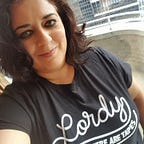A Turn Toward Spring
What does the new year have in store for us?
It was March 2020, a few weeks into home quarantine. Everyone was rushing out to buy toilet paper, but what I really needed was a birdhouse. A bluebird house.
Zoom-school had started, as had the daily fights with my fifth grader. No, she couldn’t skip her classes, and hell no, I wouldn’t let her drop out to be homeschooled. On came the endless days of printing math worksheets, relearning fractions to check answers (what the hell was a reciprocal fraction anyway?), and uploading photos of completed work.
No amount of hand sanitizer would help my anxiety. I needed something to look forward to.
I imagined looking out of the window in our dining room, my daughter’s new classroom, and seeing bluebirds. They’d build a nest, tucking bright ribbons and feathers into grass clippings, then sit on powder blue eggs until they hatched. My daughter and husband and I could watch the hatchlings grow fatter and bolder, until one day, they would fly away, a flash of blue and orange and white in the sky.
The whole process would take two months, tops, and by then life would be back to normal, I thought. By Memorial Day, we could all leave our nests and get back to life as we knew it.
I masked up, took a trip to Home Depot, bought my birdhouse, and brought it home, nailing it as high up as I could on a tall maple tree in our backyard. It was within sight of the dining room table where we all spent our days. Then I waited and watched, as I reviewed my daughter’s essay on the Oregon Trail and attended my own Zoom meetings.
A few days later, I saw activity: a flash of feathers. But they were brown, not blue. A pair of house sparrows had settled in.
Sparrows arrived in New York City in the 1850s from somewhere in Europe, and have exploded to number 25 million or more today. Pushy birds, they’re always hanging around restaurants, hunting for leftover french fries. Some would call them invasive, but I think of them as resilient.
And who am I to judge? The sight of these chubby, gray-brown birds, cheered me up. The male had a black stripe on its neck and face, almost like a facemask. How perfect.
We were on nest watch.
The sparrows sang to one another as they built their nest with dead grass and bits of paper. I felt stirrings of joy. Rebirth was happening just outside my window, a sign that nature soldiers on despite the latest human bungling.
What should we name the couple? How many chicks would they hatch? I imagined a whole world for our sparrows, who could fly freely outside the window where we worked and schooled and held our breaths, waiting for the pandemic to pass.
Then, one day, I looked out and saw a fat orange cat, Biggie, sitting on top of our birdhouse. He belonged to new(ish) neighbors. I’d been working up my courage to ask the family to keep their cat inside, after he killed a nest of rabbits under the same maple tree the previous year. But I hadn’t found the right approach — Welcome! Here’s some pumpkin bread and by the way, could you keep your murderous pet inside? — and now here Biggie was, his long arm sticking inside my birdhouse.
I started yelling. My husband raced out and chased the cat away.
I don’t think Biggie killed our sparrows, at least there were no feathers or dead birds. But the damage was done. The birds were gone and didn’t return that afternoon, or any afternoon after that. Whatever eggs they laid were abandoned.
Memorial Day came and went, as did summer, and fall. The sparrows stayed away; Coronavirus did not. We remain quarantined at home. Zoom school continues.
Our wonderful maple tree, with the abandoned bird house still attached, lost another large limb this year. At 80-feet tall, it’s the age of our house, built during World War II. The tree service says it’s at the end of its life, and we should consider cutting it down.
I’ve reached middle age, a time of life I should expect loss. Or so I’ve been told.
I’m not sure why I hoped for bluebirds. Maybe it’s the necklace my mom gave me when I had my tonsils out at eight, a cloisonne bluebird attached to a chain with wire threaded through a tiny white pearl. I wonder what my mom would say about the sparrows if I could ask her, but she’s gone. Or what she would say about the maple tree, which has sheltered so many daughters and sons under its branches since it was a sapling.
And now here we are. It’s well into winter, behind us a year with so many losses. What will the new year bring?
I look out my window and think, maybe the sparrows will return this spring. If so, they may be more cautious, peeking out of the birdhouse for several minutes before they gain the courage to gather grass and twigs for a new nest. But come back they will.
Maybe I won’t cut down that maple tree after all. It may have a few good years left.
And this time, I’ll put the birdhouse up higher, further away from danger.
